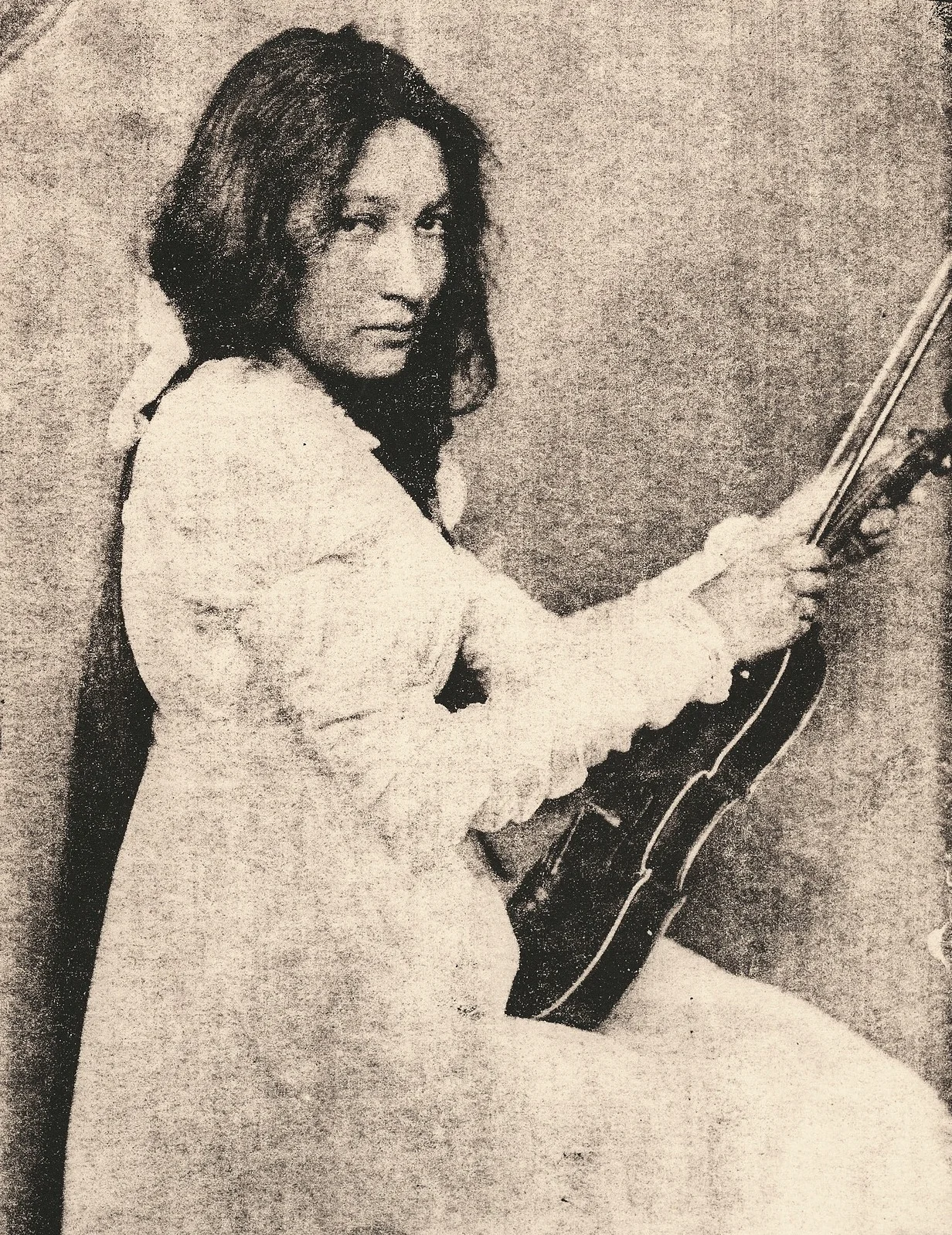On February 22, 1876, Thaté Iyóhiwiŋ, a Yankton Dakota woman living on the Yankton Indiana Reservation in South Dakota, and her European American mate, Felker Simmons, brought their daughter, Zitkála-Šá, into the world. Simmons would abandon mother and child, yet Zitkála-Šá describes the first 8 years of her life on the reservation as happy and safe. All that changed in 1884 when missionaries came to “save” the children.
Even though White's Indiana Manual Labor Institute was a Quaker project, it still forced the children who attended to adapt to the Quaker way of doing things, including taking new names. Zitkála-Šá was renamed Gertrude Simmons. In her biographies, Zitkála-Šá describes deep conflict between her native identity and the dominant white culture, the sorrow of being separated from her mother, and her joy in learning to read, write, and play the violin.
Zitkála-Šá returned to the reservation in 1887, but after 3 years she decided she wanted to further her education and returned to the Institute again. She taught music while attending school from 1891 to 1895, when she earned her first diploma. Her speech at graduation tackled the issue of women’s inequality and was praised in local newspapers. She had a gift of public speaking and music, and put both to good use during her life.
In 1895 Zitkála-Šá earned a scholarship to attend Earlham College in Richmond, Indiana. While in college she gave public speeches and even translated Native American legends into Latin and English for children. In 1887, mere weeks from graduation, her health took a turn for the worse; her scholarship did not cover all expenses, so she had to drop out.
After college Zitkála-Šá used her musical talents to make a living. From 1897-1899, she played violin with the New England Conservatory of Music in Boston. She then took a job teaching music at the Carlisle Indian Industrial School in Pennsylvania, where she also hosted debates on the issue of Native American treatment. The school used her to recruit students and impress the world, but her speaking out against their rigid indoctrination of native children into white culture resulted in her dismissal in 1901.
Concerned about her mother’s health, Zitkála-Šá returned to the reservation. While there she began to collect the stories of her people and translate them into English. She found a publisher in Ginn and Company, and they put out her collection of these stories as Old Indian Legends in 1901. Like most authors, she took another job at the Bureau of Indian Affairs as her principal support. It was at this job in 1902 that she met and married Captain Raymond Bonnin, a mixed-race Nakota man.
The couple moved to work on the Uintah-Ouray Reservation in Utah for the next 14 years. They had one son, named Ohiya. Zitkála-Šá met and began to collaborate with William F. Hanson, a composer at Brigham Young University. Together they created The Sun Dance, the first opera co-written by a Native American. The opera used the backdrop of the Ute Sun Dance to explore Ute and Yankton Dakota cultures. It premiered in 1913 and was originally performed by Ute actors and singers. Choosing such a topic for the opera would have been a way to strike back at forced enculturation, because the ritual itself had been outlawed by the Federal Government in 1883 and remained so until 1933. Much later, in 1938, The Sun Dance came to The Broadway Theatre in New York City.
From 1902-1916, Zitkála-Šá published several articles about her life and native legends for English readers. Her works appeared in Atlantic Monthly and Harper’s Monthly, magazines with primarily a white readership. Her essays also appeared in American Indian Magazine. While these pieces were often autobiographical, they were still political and social commentary that showed her increased frustration with the Bureau of Indian Affairs, which fired the couple in 1916.
In 1916, the couple moved to Washington D.C., where Zitkála-Šá served as the secretary of the Society of the American Indian. In 1926, she founded the National Council of American Indians, an organization that worked to improve the treatment and lives of Native Americans. By 1928, she was an advisor to the Meriam Commission, which would lead to several improvements in how the Federal Government treated native peoples.
Zitkála-Šá continued writing, and her books and essays became more political in such works as American Indian Stories (1921) and “Oklahoma’s Poor Rich Indians,” published in 1923 by the Indian Rights Association. She spoke out for Indian’s rights and women’s rights up until her death in 1938 at the age of 61.




